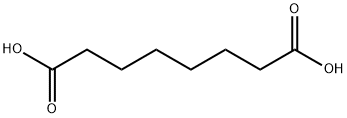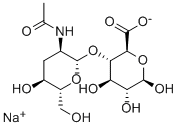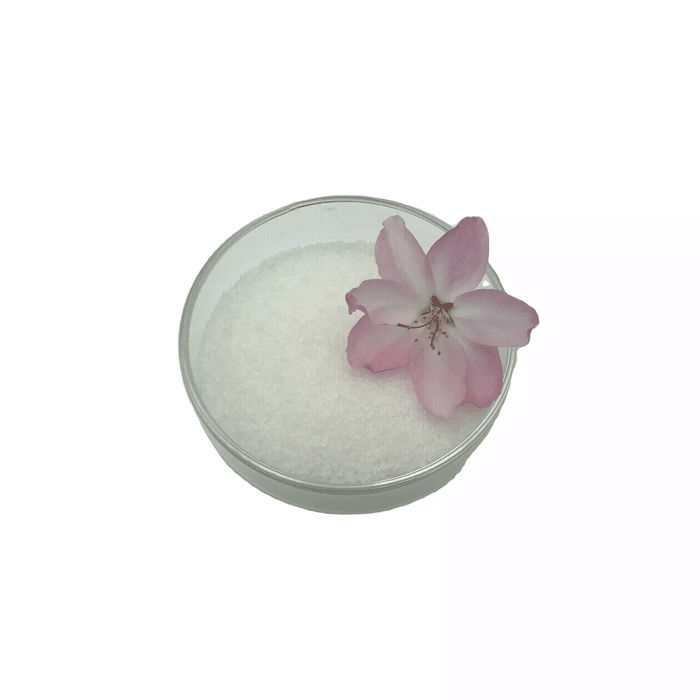Pimelic acid
Synonym(s):Heptanedioic acid;Pimelic acid
- CAS NO.:111-16-0
- Empirical Formula: C7H12O4
- Molecular Weight: 160.17
- MDL number: MFCD00004425
- EINECS: 203-840-8
- Update Date: 2024-12-18 14:08:52

What is Pimelic acid?
Description
Pimelic acid is the organic compound with the formula HO2C(CH2)5CO2H which has been synthesized from cyclohexanone and from salicylic acid. In the former route, the additional carbon is supplied by dimethyloxalate, which reacts with the enolate.
This acid (heptanedioic acid), from the Greek pimelh (pimele fat), as adipic acid, was isolated from oxidized fats. It was obtained in 1884 by Ganttner F et al. as a product of ricinoleic acid (hydroxylated oleic acid) from castor oil.
Chemical properties
white solid
The Uses of Pimelic acid
The major uses of pimelic acid are in plasticizers and polymers.
The Uses of Pimelic acid
Pimelic Acid is a metabolite found in four biofluids from dairy cows that may be used as biomarkers of milk.
Definition
ChEBI: An alpha,omega-dicarboxylic acid that is pentane with two carboxylic acid groups at positions C-1 and C-5.
Synthesis Reference(s)
Journal of the American Chemical Society, 78, p. 3425, 1956 DOI: 10.1021/ja01595a044
Organic Syntheses, Coll. Vol. 2, p. 531, 1943
Synthesis, p. 54, 1988
Purification Methods
Crystallise the acid from water or from *benzene containing 5% diethyl ether. [Beilstein 1 IV 2003.]
Properties of Pimelic acid
| Melting point: | 103-105 °C(lit.) |
| Boiling point: | 212 °C10 mm Hg(lit.) |
| Density | 1,329 g/cm3 |
| refractive index | 1.4352 (estimate) |
| Flash point: | 212°C/10mm |
| storage temp. | Store below +30°C. |
| solubility | ethanol: 0.1 g/mL, clear to very faintly hazy |
| form | Powder |
| pka | 4.71(at 25℃) |
| color | White to slightly beige |
| PH | 3.77(1 mM solution);3.25(10 mM solution);2.74(100 mM solution) |
| Water Solubility | 25 g/L (13 ºC) |
| Merck | 14,7431 |
| BRN | 1210024 |
| Stability: | Stable. Incompatible with oxidizing agents, bases. Combustible. |
| CAS DataBase Reference | 111-16-0(CAS DataBase Reference) |
| NIST Chemistry Reference | Heptanedioic acid(111-16-0) |
| EPA Substance Registry System | Heptanedioic acid (111-16-0) |
Safety information for Pimelic acid
| Signal word | Warning |
| Pictogram(s) |
 Exclamation Mark Irritant GHS07 |
| GHS Hazard Statements |
H319:Serious eye damage/eye irritation H335:Specific target organ toxicity, single exposure;Respiratory tract irritation |
| Precautionary Statement Codes |
P261:Avoid breathing dust/fume/gas/mist/vapours/spray. P264:Wash hands thoroughly after handling. P264:Wash skin thouroughly after handling. P271:Use only outdoors or in a well-ventilated area. P280:Wear protective gloves/protective clothing/eye protection/face protection. P305+P351+P338:IF IN EYES: Rinse cautiously with water for several minutes. Remove contact lenses, if present and easy to do. Continuerinsing. |
Computed Descriptors for Pimelic acid
| InChIKey | WLJVNTCWHIRURA-UHFFFAOYSA-N |
New Products
(S)-3-Aminobutanenitrile hydrochloride 4-Methylphenylacetic acid N-Boc-D-alaninol N-BOC-D/L-ALANINOL Tert-butyl bis(2-chloroethyl)carbamate 3-Morpholino-1-(4-nitrophenyl)-5,6-dihydropyridin- 2(1H)-one Furan-2,5-Dicarboxylic Acid Tropic acid 1-Bromo-3,5-Di-Tert-Butylbenzene S-2-CHLORO PROPIONIC ACID ETHYL ISOCYANOACETATE 2-Bromo-1,3-Bis(Dimethylamino)Trimethinium Hexafluorophosphate 4-IODO BENZOIC ACID 3-NITRO-2-METHYL ANILINE 1-(2,4-DICHLOROPHENYL) ETHANAMINE (2-Hydroxyphenyl)acetonitrile 4-Bromopyrazole 2-(Cyanocyclohexyl)acetic acid 4-methoxy-3,5-dinitropyridine 1-(4-(aminomethyl)benzyl)urea hydrochloride 2-aminopropyl benzoate hydrochloride diethyl 2-(2-((tertbutoxycarbonyl)amino) ethyl)malonate tert-butyl 4- (ureidomethyl)benzylcarbamate Ethyl-2-chloro((4-methoxyphenyl)hydrazono)acetateRelated products of tetrahydrofuran








You may like
-
 111- 16-0 Pimelic Acid 98%View Details
111- 16-0 Pimelic Acid 98%View Details
111- 16-0 -
 Pimelic Acid CAS 111-16-0View Details
Pimelic Acid CAS 111-16-0View Details
111-16-0 -
 Pimelic acid 98% CAS 111-16-0View Details
Pimelic acid 98% CAS 111-16-0View Details
111-16-0 -
 Pimelic acid CAS 111-16-0View Details
Pimelic acid CAS 111-16-0View Details
111-16-0 -
 1975-50-4 98%View Details
1975-50-4 98%View Details
1975-50-4 -
 2-HYDROXY BENZYL ALCOHOL 98%View Details
2-HYDROXY BENZYL ALCOHOL 98%View Details
90-01-7 -
 14714-50-2 (2-Hydroxyphenyl)acetonitrile 98+View Details
14714-50-2 (2-Hydroxyphenyl)acetonitrile 98+View Details
14714-50-2 -
 118753-70-1 98+View Details
118753-70-1 98+View Details
118753-70-1